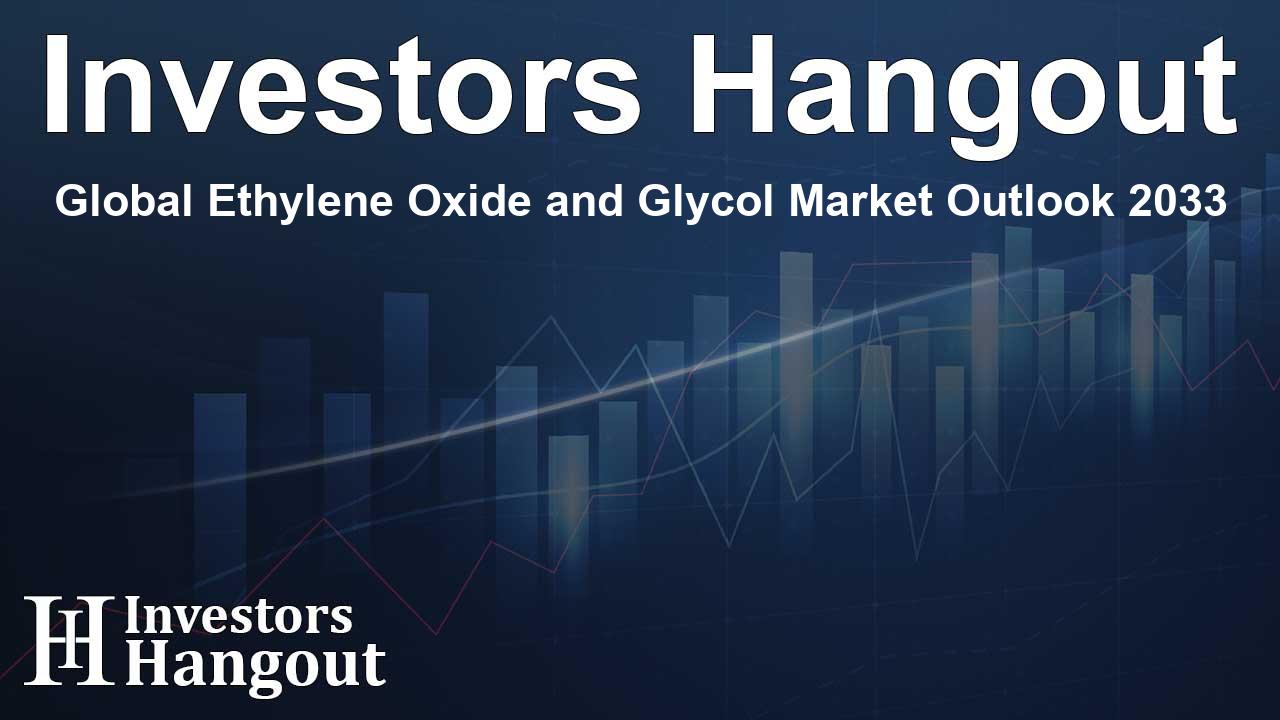Global Ethylene Oxide and Glycol Market Outlook 2033

Global Market Insights for Ethylene Oxide and Ethylene Glycol
The ethylene oxide and ethylene glycol market is anticipated to witness substantial growth, projected to achieve a staggering USD 48.86 billion by 2033, up from USD 30 billion in 2023. Ethylene oxide (EO), characterized by its molecular formula C2H4O, manifests as a highly reactive three-membered ring compound produced through the oxidation of ethylene with catalysts.
On the other hand, ethylene glycol (EG), known for its sweet taste and colorless, odorless appearance, holds the chemical formula C2H6O2. Hydrated from EO, it predominantly serves applications in antifreeze and coolant due to its favorable boiling and freezing points. Furthermore, ethylene glycol is crucial in the production of PET (polyethylene terephthalate), which is vital for manufacturing plastic bottles and textiles. These compounds significantly contribute to various industries, underscoring their importance in the global economy.
Regional Market Trends
The Asia Pacific region is poised to dominate the ethylene oxide and ethylene glycol market during the forecast period. The affordability of labor in this area aids in reducing production costs while enhancing yield and profitability for EO and EG manufacturers. Key industries, including chemical, healthcare, consumer goods, pharmaceuticals, and automotive, bolster the expanding demand for these compounds. The ongoing industrialization and urbanization in these areas further accelerate market growth.
Dominance of Ethylene Glycol Segment
In terms of product segmentation, the ethylene glycol segment significantly outperformed others, capturing a substantial market share of 55% and generating $16.50 billion in revenue in 2023. This segment is subdivided into various types, including mono-ethylene glycol, tri-ethylene glycol, diethylene glycol, and polyethylene terephthalate, indicating a rich diversity in application and utility.
Application Trends for Polyester Fibers
The engagement of polyester fibers in the application sector is notable, with it securing a 34% market share and revenue of $10.20 billion in 2023. This illustrates the pivotal role of EO and EG in the production of vital textile products.
Market Dynamics and Developments
Various factors are driving growth in the EO and EG market. A key driver is the vast range of applications in critical sectors. Ethylene oxide is integral to producing EG, surfactants, and other essential chemicals widely used in healthcare for sterilizing equipment, in the automotive industry, and for personal hygiene products. In contrast, ethylene glycol's primary applications include antifreeze, PET, and heat transfer fluids.
Technological Innovations
Technological advancements continually foster product innovations that significantly enhance the efficiency and applicability of EO and EG. The industry is experiencing increased capabilities thanks to the development of new materials and improved production techniques stemming from ongoing research and development.
Health and Environmental Challenges
Despite the remarkable growth potential of EO and EG, some hurdles undermine their market expansion. Health risks associated with EO and EG can pose a significant restraint. Exposure to these compounds can lead to severe health implications, including respiratory issues, neurological damage, and even cancer risk—a pressing concern in compliance with stringent safety regulations.
Environmental impacts also challenge market growth. These chemicals contribute to air and water pollution and can adversely affect soil integrity, necessitating careful handling practices to mitigate risks.
Key Players in the Market
Several major players are currently operating in the global ethylene oxide and ethylene glycol market, including:
- AkzoNobel
- BASF
- Dow Chemical
- Formosa Plastics Group
- Huntsman Corporation
- INEOS Group Limited
- Reliance Industries Ltd.
- SABIC
- Shell Group
- Sinopec
Market Segmentation Overview
The ethylene oxide and ethylene glycol market can be segmented broadly based on product (ethylene oxide and ethylene glycol), application (including polyester fibers, PET resins, antifreeze, surfactants, automotive coolants, and plastics), and end-use industries (extending across automotive, medical, food and beverage, textile, and chemicals).
Moreover, the global landscape includes several key regions such as North America, Europe, Asia-Pacific, South America, and the Middle East and Africa, each contributing to the dynamic market shifts observed today.
Frequently Asked Questions
What is the projected market size of ethylene oxide and glycol by 2033?
The ethylene oxide and ethylene glycol market is projected to surpass USD 48.86 billion by 2033.
Which region is expected to dominate the market?
Asia Pacific is forecasted to dominate the ethylene oxide and glycol market due to cost-effective production and strong industry demand.
What are the primary applications of ethylene glycol?
Ethylene glycol is primarily used in antifreeze, PET production, and automotive coolants.
Who are the major players in this market?
Key players include AkzoNobel, BASF, and Dow Chemical, among others.
What are the environmental concerns associated with ethylene oxide?
Ethylene oxide contributes to air and water pollution and poses health risks, necessitating strict safety measures.
About Investors Hangout
Investors Hangout is a leading online stock forum for financial discussion and learning, offering a wide range of free tools and resources. It draws in traders of all levels, who exchange market knowledge, investigate trading tactics, and keep an eye on industry developments in real time. Featuring financial articles, stock message boards, quotes, charts, company profiles, and live news updates. Through cooperative learning and a wealth of informational resources, it helps users from novices creating their first portfolios to experts honing their techniques. Join Investors Hangout today: https://investorshangout.com/
Disclaimer: The content of this article is solely for general informational purposes only; it does not represent legal, financial, or investment advice. Investors Hangout does not offer financial advice; the author is not a licensed financial advisor. Consult a qualified advisor before making any financial or investment decisions based on this article. The author's interpretation of publicly available data shapes the opinions presented here; as a result, they should not be taken as advice to purchase, sell, or hold any securities mentioned or any other investments. The author does not guarantee the accuracy, completeness, or timeliness of any material, providing it "as is." Information and market conditions may change; past performance is not indicative of future outcomes. If any of the material offered here is inaccurate, please contact us for corrections.